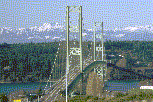

Topics covered:
Analysis and design of experiments from the point of view of
regression. Randomized block tests, split-plot and Latin square designs,
full factorial models, full and partial confounding, fractional factorial
designs, Plackett-Burman designs, resolution and projectivity of designs,
and related topics.
SAS will be used for problems that require the use of a computer
package. Previous familiarity with SAS is not required.
Prerequisites:
Mathematics 320 or the equivalent.
Course Hours and Room:
MWF 1:00-2:00pm -- Cupples I Rm 113
Links:
Homework Assignments
TakeHome
Final due before May 7 at 4:00 pm
Handouts
(including Guide to using SAS and
P-value Calculator using SAS)
SAS programs covered
or to be covered in class
Stanley Sawyer's home page
Mathematics
Department Home Page
Washington
University Home Page
Textbook:
Statistics for Experimenters: Design, Innovation, and
Discovery, 2nd edition,
G. Box, J. S. Hunter, and W. G. Hunter, John Wiley and Sons, 2005,
ISBN 978-0471-71813-0
Instructor:
Prof. Stanley Sawyer -- Cupples I, Room 107
Phone: (314) 935-6703
Email:
sawyer@math.wustl.edu
Office Hours:
WF 4:00-5:00pm -- Rm 107 Cupples I
(Warn me in advance if you are coming --
or other times by appointment)
Exams, Homework Sets, Grades, and Final:
There will be three or four homework sets, perhaps an inclass midterm,
and a take-home final. Grades will be based on on the homework sets
(around 50%), the midterm (around 20%), and the final (around 30%), with
percentages adjusted if there is no inclass midterm. Cr means D or better
if you elect ``Credit/No Credit.'' The Take-Home Final will be due when
the Final is scheduled, which is May 7, 2008, 1:00-3:00 PM.
Collaboration:
Collaboration on homework is allowed and can be helpful (and fun).
However, you must do all written work yourself, and write and run all
computer programs yourself.
Warning:
Make a copy of each homework before you hand it in!!
It may not be returned before you need to refer to it for the next
homework (or for the next test).
NOTE:
Always format your homework in the following way:
(i) your answers to all homework problems. For answers that you
obtain using computer output, include references to page numbers in
section (iii) below to your computer output if the output has more
than one or two pages,
(ii) the source code for all computer program or programs that you
used in part (i), and
(iii) all of the computer output on which you based your answers in
part (i). If the output does not have consecutive computer-written
page numbers, write your own page numbers on the top of each page and
refer to these page numbers in part (i).
 Click here for Stanley Sawyer's home page:
Click here for Stanley Sawyer's home page:
Last modified April 28, 2008